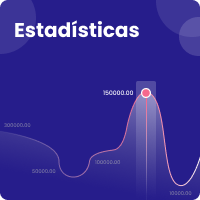Presence of metals in a ferruginous hot spring in the Cundinamarca region, Colombia
DOI:
https://doi.org/10.26507/paper.2929Palabras clave:
Colombia, ferruginous, hot spring, metals, standards, regulationsResumen
The presence of metals in hot springs has been associated with various adverse health effects. Although some elements are essential for humans, they are dangerous at high levels of exposure.
There have been little studies on the presence of metals in hot springs in Colombia, therefore, laboratory tests were carried out over a period of six months (June to December, 2021), with spot samples every month in a ferruginous hot spring in the Cundinamarca region, Colombia.
Tests were carried out for arsenic (As), chromium (Cr), mercury (Hg), lead (Pb), aluminum (Al), copper (Cu), iron (Fe), magnesium (Mg), manganese (Mn), nickel (Ni), zinc (Zn), strontium (Sr), and calcium (Ca) in the Laboratory of the Bogota Aqueduct and Sewer Company (in Spanish EAAB). Since there are no regulations in Colombia there is no regulation on the quality of hot springs, the analysis of results was carried out by comparing them with standards for drinking water and swimming pools from countries such as Canada, Germany, and the World Health Organization (WHO) as well as hot springs in Japan. It was observed that iron was the only metal that exceeded the regulations for drinking water and swimming pools.
Descargas
Citas
Alberta, (Canada). Government. (2014 – 2018). Pool Standards July 2014 (Amended January 2018). Available online: <https://open.alberta.ca/dataset/6bc9b110-3b67-4d2e-b797-ab9ee003e7a4/resource/37c20024-52c5-44f0-9faa-c8360c10b17f/download/standards-pools-2018.pdf>, (accessed on 08 March 2022).
Alberta (Canada), Public Health Act. Alberta Regulation 204/2014. Public Swimming Pools Regulation Available in: <https://www.qp.alberta.ca/1266.cfm?page=2014_204.cfm&leg_type=Regs&display=html>. (Accessed on 30 March 2020).
Canada, Health Canada, (2020). Guidelines for Canadian Drinking Water Quality. Available online: <https://www.canada.ca/content/dam/hc-sc/migration/hc-sc/ewh-semt/alt_formats/pdf/pubs/water-eau/sum_guide-res_recom/summary-table-EN-2020-02-11.pdf>, (accessed on 01 March 2022).
Colombia, Ministry of Health and Social Protection. Article 6, Decree 554 of 2015. Available in: <https://vlex.com.co/vid/proyecto-ley-62-2015-581011182>. (Accessed on 20 May 2019).
Colombia, Ministry of Social Protection. (2010). By which Decree 2171 of 2009 is partially regulated. Available online: < http://corpouraba.gov.co/sites/default/files/resolucion1618de2010.pdf>, (accessed on 01 March 2022).
Colombia, Ministry of Social Protection and Ministry of environment, housing and territorial development. Resolution 2115 (2007). By means of which characteristics, basic instruments and frequencies are indicated of the control and surveillance system for the quality of water for human consumption. Available online: < https://laboratoriodeanalisis.lasalle.edu.co/wcm/connect/LIAC/d951c109-a227-44a3-8a42-1d1f87db2b43/Resoluci%C3%B3n_2115-2007.pdf?MOD=AJPERES&CVID=lMo0SFe>, (accessed on 01 March 2022).
Germany. BGBl. I 2016, 476. (2016). Ordinance on the quality of water intended for human consumption. (Drinking Water Ordinance - TrinkwV). Available in: < https://www.gesetze-im-internet.de/trinkwv_2001/BJNR095910001.html>>. (Accessed on 20 February 2020).
Germany. DIN 19643-1. (1997). Treatment of water of swimming pools and baths –Part 1. Available in: <https://www.beuth.de/de/norm/din-19643-1/2936483>. (Accessed on 20 February 2020).
Ontario, (Canada). (2003). “Ontario Regulation 169/03, Ontario Drinking – Water Quality Standards”. Available online: <https://www.ontario.ca/laws/regulation/030169>, (accessed on 08 March 2022).
Ontario, (Canada). (2003). “Technical Support Document for Ontario Drinking Water Standards, Objectives and Guidelines”. Available online: <https://cvc.ca/wp-content/uploads/2011/03/std01_079707.pdf>, (accessed on 08 March 2022).
Ontario, (Canada). Ministry of Health and Long-Term Care. (2019). “Recreational Water Reference Document”. Available online: < https://www.health.gov.on.ca/en/pro/programs/publichealth/oph_standards/docs/reference/recreational_water_en.pdf >, (accessed on 01 March 2022).
Ontario, (Canada). Health Protection and Promotion Act. (1990). “R.R.O. 1990, Reg. 565: Public Pools”. Available online: < https://www.ontario.ca/laws/regulation/900565>, (accessed on 01 March 2022).
US EPA. (1989). Metals. Available in: < https://www.epa.gov/caddis-vol2/metals>. (Accessed on 12 February 2022).
WHO (2021). World Health Organization. A global overview of national regulations and standards for drinking-water quality. Second edition. Available in: <https://www.who.int/publications/i/item/9789241513760>. (Accessed on 29 September 2020).
Durowoju, OS., Ekosse, GE., and Odiyo., JO. (2020). Occurrence and Health-Risk Assessment of Trace Metals in Geothermal Springs within Soutpansberg, Limpopo Province, South Africa. International Journal of Environmental Research and Public Health, vol. 17 (12), pp 1 – 20. https://doi.org/10.3390/ijerph17124438
García, N., Pedraza, J., Montalvo, J., Martínez, M., and Leyva, J. (2012). Evaluación preliminar de riesgos para la salud humana por metales pesados en las bahías de Buenavista y San Juan de los Remedios, Villa Clara, Cuba. Revista Cubana de Química. Available in:< https://revistas.uo.edu.cu/index.php/cq/article/view/324/318>. (Accesed on 14 April 2020).
Sanchez, Y., Mehrvar, M., McCarthy, L., Quiñones, E., Rodriguez, C., Reuβ, A., and Romero., J. (2022). An Overview of Water Quality Regulations or Standards in Swimming Pools, Drinking Water, and Hot Springs in Germany, Canada, and Colombia. ACOFI 2022.
Sanchez, Y. (2023). Water Quality Assessment of Hot Springs and Its Discharges into the Tributaries Fed into the Bogota River. Universidad Escuela Colombiana de Ingeniería Julio Garavito.
Descargas
Publicado
Cómo citar
Evento
Sección
Licencia
Derechos de autor 2023 Asociación Colombiana de Facultades de Ingeniería - ACOFI

Esta obra está bajo una licencia internacional Creative Commons Atribución-NoComercial-SinDerivadas 4.0.
| Estadísticas de artículo | |
|---|---|
| Vistas de resúmenes | |
| Vistas de PDF | |
| Descargas de PDF | |
| Vistas de HTML | |
| Otras vistas | |








